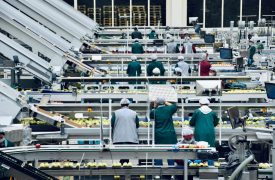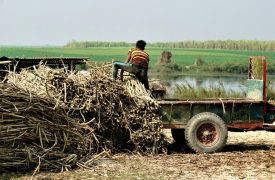Insights and learnings on regenerative agriculture from the private sector

Regenerative agriculture has been hailed as a solution to transform the current industrial food and agriculture system. While definitions and principles on regenerative agriculture are still under development, most users of the approach focus on its positive outcomes through improved soil health and biodiversity, resilient ecosystems and supporting farmer livelihoods. Given its size, influence and impact across the world, the private sector has a huge role to play when it comes to scaling up regenerative agriculture.
Through assessing the performance of 350 of the most influential food and agricultural companies on key themes across environment, nutrition and social inclusion, WBA’s 2021 Food and Agriculture Benchmark revealed that 55% of companies are yet to provide evidence on improving soil health and increasing agrobiodiversity, both of which are key elements of regenerative agriculture. Of those that do, only 6% provide quantitative data or have set company-wide targets to back up their commitments, demonstrating a significant opportunity for the private sector to step up their contribution towards transforming the food system. See 2021 results
As part of our effort to ensure collective learning, WBA hosted Communities of Practice sessions for companies to share peer-to-peer learnings and experiences regarding their regenerative agriculture journey. The sessions invited presentations and expertise from Allies New Foresight, OP2B and Forum for the Future, who all work directly with companies on regenerative agriculture. With representatives from multinational companies across agricultural inputs, animal proteins, food and beverage manufacturing and retail sectors, some of the common themes included making progress through pilot projects, carbon and biodiversity benefits, ensuring farmer support in the transition, and the need for common metrics to track and report progress.
Making headway through pilots
One of the ways companies start working on regenerative agriculture is through pilot projects focused on a particular region or commodity. Given that local characteristics such as soil health, nutrient levels and crop type are highly important to regenerative agriculture, pilots are an excellent way of understanding how to transition from conventional agricultural practices.
Several pilot projects also include collaborations between NGOs and companies across the value chain to support farmers by offering them a financial benefit to adopt regenerative practices. However, for regenerative agriculture to deliver its benefits to the food system, these pilots need to be scaled up and adapted across different types of farms and regions across the world.
Moving beyond the carbon tunnel vision
Several companies highlighted that regenerative agriculture was a priority for them because of its carbon sequestration potential. As such, regenerative agriculture is often included as part of a company’s net-zero strategy, and is a key feature of several insetting projects that companies use to reduce their emissions within their own value chain.
While some companies are solely focused on regenerative agriculture for its carbon benefits, others are embedding the approach more holistically across their sustainability strategy. In addition to sequestering carbon, regenerative agriculture builds resilience into food systems by strengthening soil, water and biodiversity resources. This allows for reduced input use as well greater ability to withstand extreme weather events, thereby supporting the productivity and resilience of farmers.
 Ensuring farmers are supported in the transition
Ensuring farmers are supported in the transition
There was common consensus that farmers are a key player in the transition to regenerative agriculture. However, companies mentioned that supply chain transparency and the inability to work directly with farmers was among the major barriers restricting progress on regenerative agriculture. When working with several commodities across complex supply chains or buying raw materials from the open market, many companies are yet to make improvements on tracing their supply chain.
For companies that worked directly with farmers, they emphasised the need to support and finance the transition from conventional to regenerative practices for farmers. This can be through various approaches from technical assistance, training programs and access to tools, to offering long-term contracts and paying premiums for regeneratively produced commodities.
Need for common metrics to report progress
Since regenerative agriculture is a context specific approach, many companies and stakeholders have found it challenging to follow a common set of metrics and guidelines. While using techniques such as no-till farming and cover cropping may work on one farm, others may require interventions such as more nutrient input to build back soil fertility.
As such, many organisations have moved beyond prescribing specific techniques, and instead focus on an outcomes-based framework to guide companies on their regenerative agriculture practices. For instance, WBA’s Food and Agriculture Benchmark methodology and the OP2B framework – which are in close alignment – follows an outcomes-based assessment focussed on indicators such as improving soil health and agrobiodiversity, optimising the use of inputs, reducing water withdrawal, promoting farmer productivity and resilience, among others.
It cannot be done by companies alone
While the private sector is a key player towards regenerating food systems, incentives from other stakeholders such as investments from financial institutions and repurposing of agricultural subsidies from governments can help create the enabling conditions needed to accelerate the transition.
Recognising the wider role of the system and strength of collective action, WBA works with its Allies to incentivise private sector impact towards a regenerative and resilient food system, as well as aiming to leverage our data and insights to support policymakers.


